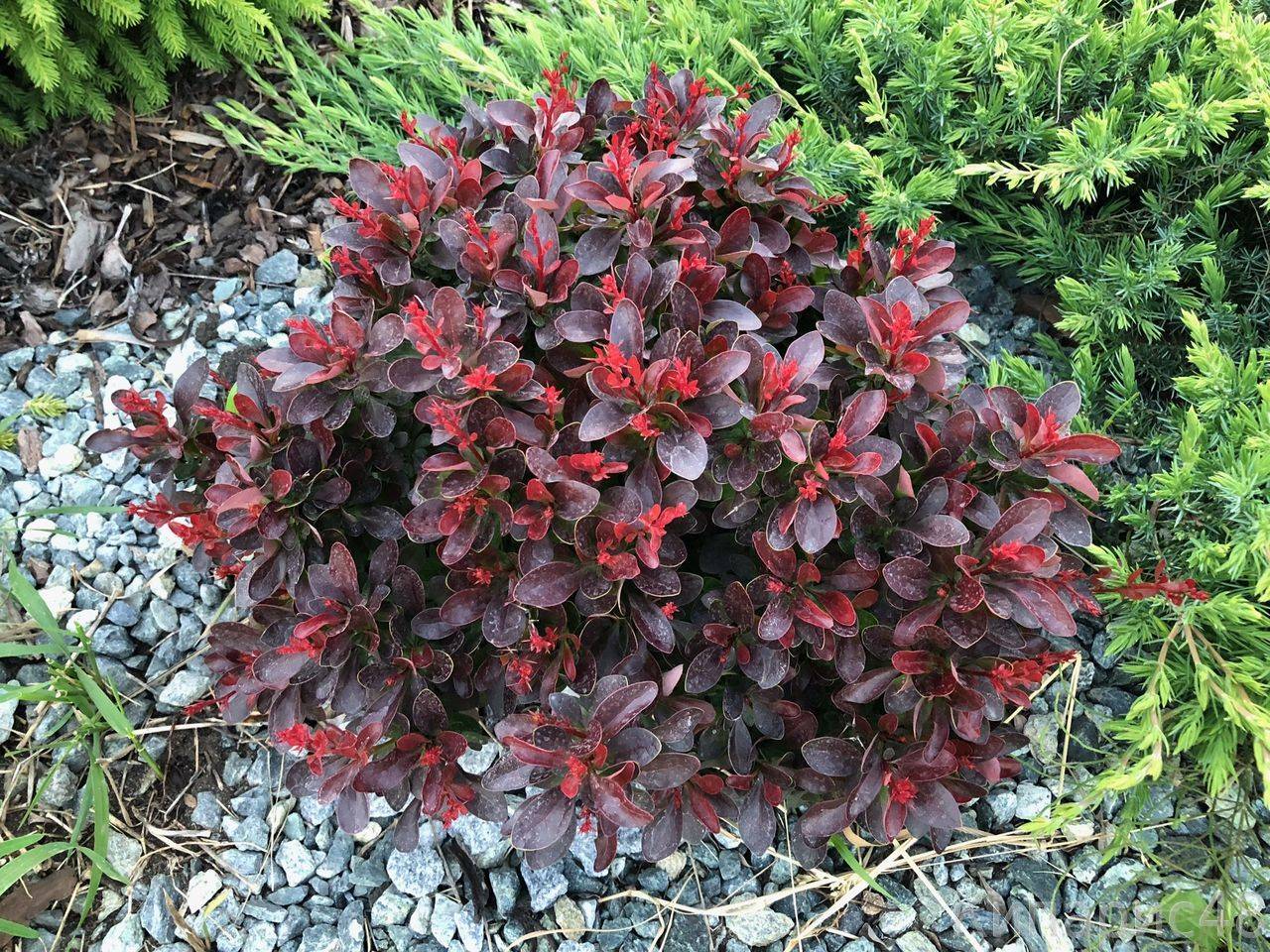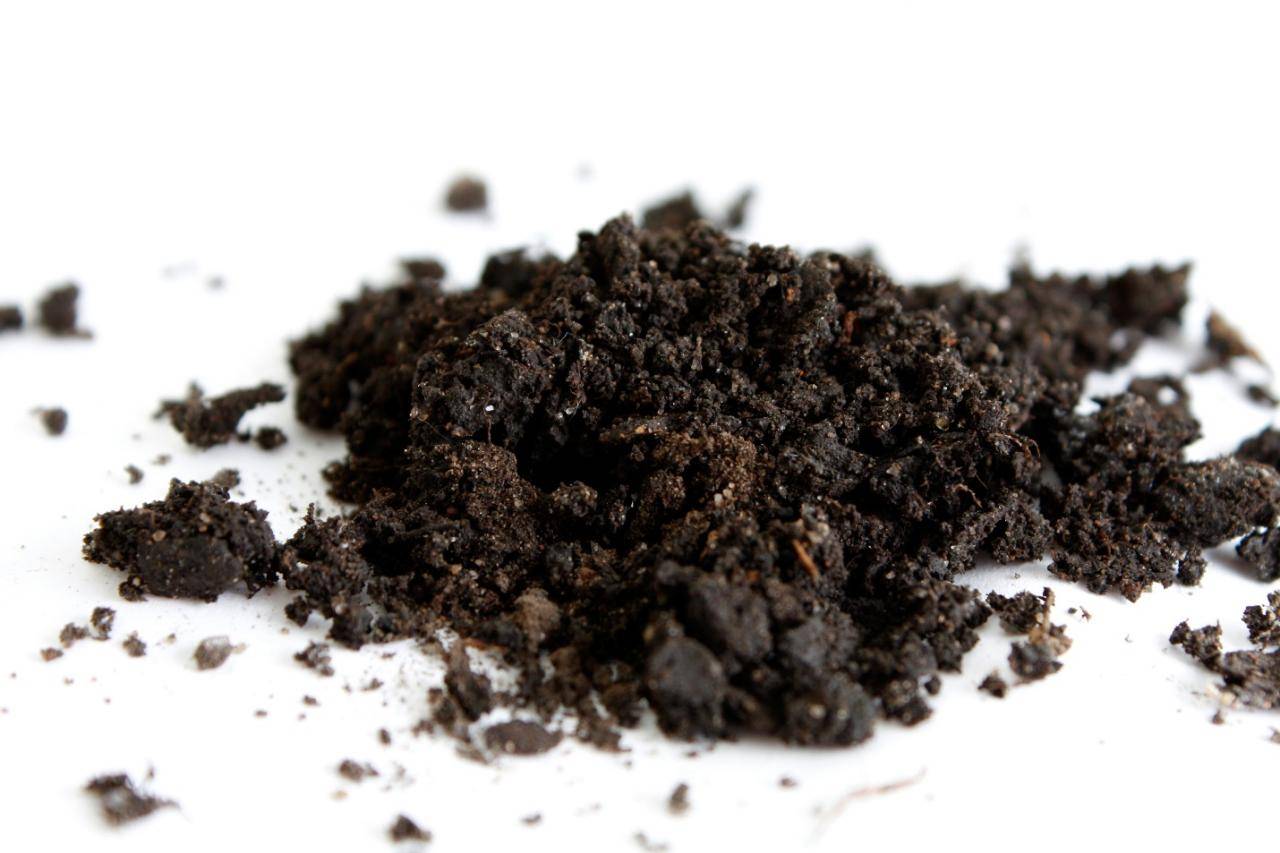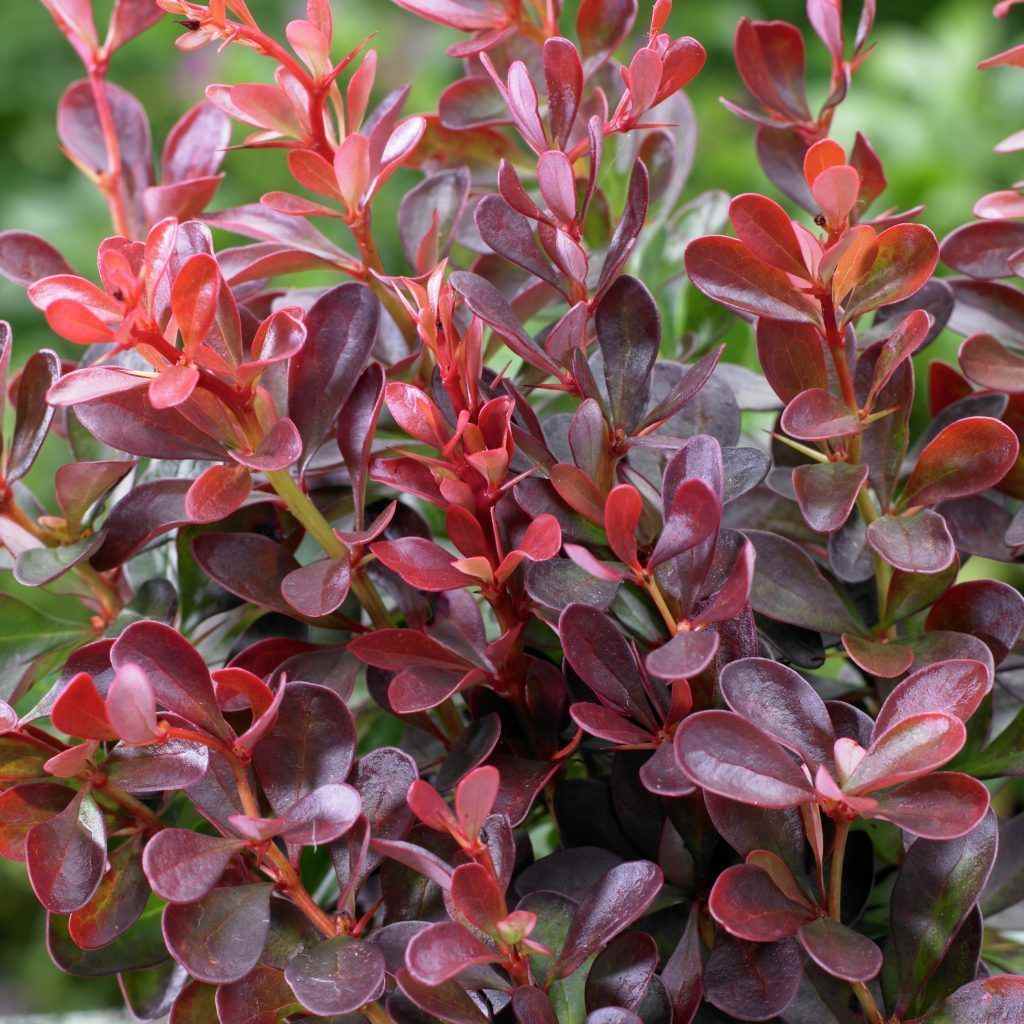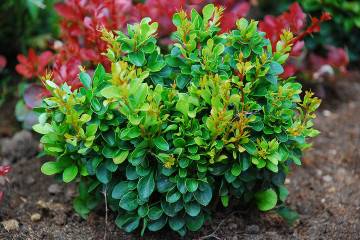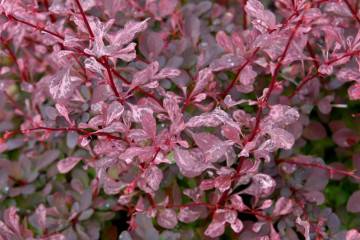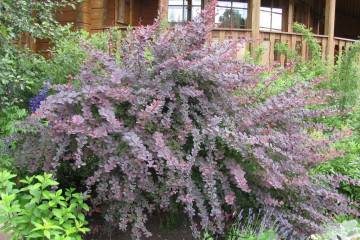Tunberg barberry Atropurpurea Nana - variety description
Content:
Barberry Thunberg Atropurpurea Nana is rare in gardens and ornamental plots. The perennial shrub has a life expectancy of up to 50 years. It is small in size and therefore does not need a large area.
Description of the variety
Barberry Nana belongs to the Barberry family. It has purple foliage, red fruits and dwarf sizes. A plant native to Asia, it prefers mountains and rocky areas in nature.
Thunberg barberry (Berberis Thunbergii) is found in Japan and China. In European countries, it is used as a decoration for the site. Its fruits are inedible, they are bitter and viscous.
Barberry Thunberg (Berberis Thunbergii) reaches a height of 60 cm. It is wide in diameter, capable of growing up to 100 cm. Resistant to temperature changes, grows slowly.
Prefers well-lit areas, otherwise the leaves will lose their beautiful shade.
Planting a plant
Decorative flowers are not easy to grow. The owner of the land can buy both seedlings and seeds. Each of the options has its own advantages and disadvantages.
Seeds
The most affordable way for most florists. Barberry Atropurpurea Nana is difficult to propagate by cuttings or by dividing a bush. Therefore, it is better to purchase seeds.
Planting of the material begins in March. For this, the seeds are kept in a weak pinkish solution of manganese for a day. Use a universal mixture as the ground or make it yourself. For this, sand, peat, garden soil are mixed in equal parts.
Barberry Atropurpurey is planted to a depth of 1 cm; an interval of 3 cm is maintained between plantings. After that, the seedlings are watered, covered with foil or glass. The optimum temperature for growing is about 25 ° C.
Landing in open ground
Planting is carried out in early May, when the ground warms up thoroughly. You need to choose well-lit areas, otherwise the barberry Atropurpurea Nana will lose its decorative effect.
In landscape design, barberry is planted as a hedge. In this case, the bushes are planted in a trench; an interval of 40 cm is maintained between the plants.
Care
Barberry Thunberg Atropurpurea Nana is unpretentious, able to withstand violations of conditions of detention. But with proper care, the plant will delight with its beauty longer.
Watering
Barberry Nana Purpurea needs moderate soil moisture. In the heat, it is watered every 10 days, but there should be a lot of water. It is brought in at the very roots. Small seedlings need to be watered every day.
Top dressing
In the first year of life, the plant is fertilized only with organic means. The rest of the time during the season, barberry is fed three times.
At the beginning of spring, nitrogen-containing agents are given, in the fall potassium and phosphorus, diluted organic matter before winter. With the correct fertilization, plants need less maintenance.
Pruning
In the design of the site, not only the composition of the plants is important, but also how they look. In May or June, barberry is cut not only to shape the bush. Remove weak, elongated, dry branches, thin out the crown.
Diseases and pests
The variety has a tendency to rust and powdery mildew.Diseases are identified by characteristic brown or gray spots. For processing, fungicides are used. In the fall, the soil is spilled with urea.
Barberry Thunberg and Boxwood affects aphids and moths. Pests are easy to see visually. For processing, insecticides are used. In the fall, it is necessary to collect the foliage, especially if it is shrouded in cobwebs - insect pupae are hiding in it.
Bloom
The first flowers appear in early June. They are red with a yellow center, collected in a brush. The flowering is profuse and lasts more than a month. Purple leaves stand out beautifully against the background of the inflorescences.
Fruits appear late, around October. The variety is inedible, so it makes no sense to collect them, but they serve as a beautiful decoration for bushes.
Preparing for winter
In October, the plants are prepared for wintering. Mulching the soil avoids excessive hypothermia of the soil. For this, the plantings are covered with straw or peat.
In the northern regions, barberry is covered with spruce branches. You can tie a rope around the branches, place a net on top and pour foliage into it. The structure is covered with agrofiber.
Application
Thunberg barberry is inedible, therefore it is used only in landscape design. It is planted as a hedge, along paths or to decorate a pond. The plant looks good both alone and in composition.
Barberry looks good in rockeries and rabatki. Due to its unpretentiousness, the plant is very popular in landscape design. Purple leaves are very beautiful and therefore the variety is used to decorate various shrub compositions.
Beneficial features
Barberry is used not only in cooking. Its leaves, bark and roots have medicinal properties. Therefore, they are used in traditional medicine.
The infusion eliminates excess bile, helps to increase immunity, and suppresses the growth of pathogenic microflora. When taken regularly, blood sugar levels decrease. If mucosal lesions are observed in the gastrointestinal tract, barberry eliminates inflammatory processes.
Leaves can be brewed both fresh and dried. Not everyone can use them.
You should not combine the use of different parts of the plant, i.e. tea from leaves and bark, fruits. Otherwise, you can easily get an overdose of nutrients, which will lead to poisoning.
You can not eat unripe fruits, as they contain a large amount of tannins. In rare cases, an individual intolerance to barberry appears.
The Thunberg Nana variety is of little use for harvesting fruits - due to its dwarf size, their number is minimal. This is an ornamental plant for decorating the site. Before choosing a variety for planting, you need to read the description - this will allow you to get an idea of the shrubs.
